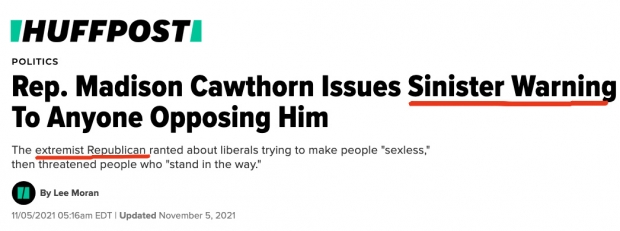Types of Media Bias: Subjective Qualifying Adjectives

AllSides' guide to 12 Types of Media Bias has been updated to include subjective qualifying adjectives as a type of media bias.
What are subjective qualifying adjectives, and how do they indicate a bias when used by the media?
Qualifying adjectives are words that “attribute to a given noun one or some set of specific properties, or that in any case accounts for some of its characteristics.”
These descriptors are often subjective in nature, and journalists often include adjectives in ways that not everyone may agree with. For instance, people who are in favor of limiting abortion would likely not agree with a journalist who characterizes new laws restricting the act as a "disturbing trend." Others may not agree with a reporter who characterizes a group of activists as an “extremist group” or “far-left organization.” Other examples of nouns with subjective qualifying adjectives include "critical bill," "baseless claim," "sharp rise," "harsh rebuke," and "offensive statement."
Some examples include:
When a journalist uses qualifying adjectives, they are suggesting a way for you to think about or interpret the issue, instead of just giving you the facts and letting you make judgements for yourself. This can manipulate your view. Subjective qualifiers are closely related to spin words and phrases, because they obscure the objective truth and insert subjectivity.
Read more about subjective qualifying adjectives, and get more examples, by visiting our Types of Media Bias resource.
Julie Mastrine is the Director of Marketing and Media Bias Ratings at AllSides. She has a Lean Right bias.

April 29th, 2024

April 29th, 2024

April 26th, 2024

April 25th, 2024